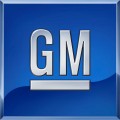By Peter Klinge, Jr.
Greatest Business Rivalries & Why They are Important to Innovation… Inspired by the March, 2013 Fortune story here’s why competitive rivalries are important.
- Focus the mission of the organization on the highest priorities;
- Highlight weaknesses and needs to bolster competencies;
- Forces a team to be creative; develop new ideas and approaches to outflank the competition;
- Benefits the general market customer in finding choices in product improvements, pricing, and solution alternatives.
In my career I’ve been fortunate to be part of great teams for some of the ones mentioned in the Fortune story. The experience informs how the companies I’m engaged with today view competition and innovation. A couple of examples:
Rivalries
Pepsi v Coke— listed on Fortune as the #1 rivalry. As a member of the BBDO advertising team I was steeped in the cultural imperatives and urgency of the ‘cola wars’. It was exciting, fast paced. Lots of Super Bowl event marketing and even a mix of business warfare with real wars. At the time in the early 90’s the U.S. Gulf War I conflict in the Mid East began. Emphasis on the launch of Pepsi’s major Super Bowl campaign You Got the Right One Baby… Uh Huh and major live interactive promotion plan had to be curtailed due to Washington national security concerns. Yes, this really happened…
Pepsi had been challenging Coke dominance, particularly in the U.S., since the 70’s with the taste challenge campaign. It was having an effect on Coke’s supermarket share… where consumers had a choice. By the late 80’s and early 90s Pepsi as a potent trademark brand of Brand Pepsi and now Diet Pepsi the company was upping the rivalry with bold, spirited entertainment campaigns featuring the likes of Michael Jackson, Madonna, Michael J. Fox, Cindy Crawford, and then of course Ray Charles… my baby 🙂
Pepsi and its partners innovated marketing, presented consumer entertaining alternatives. We used the Pepsi Cola Brand trademark platform to tie into PepsiCo’s Frito Lay and restaurant business i.e. Pizza Hut, Taco Bell, KFC. We announced new products and ventures for a wider selection of beverages with Ocean Spray, Lipton, and others.
Were we always successful as in the case of Crystal Pepsi? No, but we were fearless and bold, and we didn’t allow setbacks to hold us back from the next innovation.
IBM v HP- # 8 on the Fortune list. There have been multiple facets to the competition in this space and the dynamic trend shifts driven by the Internet. Changing technology has affected both companies, and many others, over the last 30 years. Thirty years ago both companies began to acknowledge the general office market trend to personal computing versus Big Iron products i.e mainframes, data terminals. Personal computing was initially inspired by Apple. But IBM quickly followed with their own personal computer c 1980, more for protection of the Big Iron business.
However, the PC business led by Wintel, i.e. Microsoft and Intel, began to drive the technology industry in new directions with lots of competitive fields: of course personal computers, printers, desktop software, new operating systems, new ways to buy i.e. buying a computer at retail or direct via Dell.
This period of change has yielded immense creativity in new designs and innovations we could only imagine in 1980. There are corporate rivalries and then there are individual ones such as Gates v Jobs; though many of them are less so than the media would have us believe. Nonetheless, personal competition between leaders can inspire a toughness and relentless drive that improves the market landscape for customer choice.
At different points I’ve been part of IBM, Intel, and various other technology companies.
Where rivalries can and often are counter productive is if:
- Company leaders lose sight of their customer understanding;
- Benchmark solely against a principal rival and lose sight of broader market shifts, and new opportunities outside the box of the current competitive framework;
- Competition can be in 3 threat forms: direct is the most obvious, indirect, and over the horizon competitors who disrupt the market entirely and reorient the game. Examples include Google redefining search at the expense of other Internet services such as Yahoo, AOL.
- Rival fatigue in the organization. People get tired then complacent if a company becomes obsessive about one or two rivals. It means some times the team needs to play safe to avoid mistakes, or business becomes too repetitive and shuts down on new ideas;
- Avoid personalizing rivalries. True for leadership especially but also insofar as it sets the tone for the entire organization. This gets in the way of clear eyed objectivity and good decision making. Moreover this creates real team anxiety and health problems that will multiply the number of mistakes made from the previous points mentioned.
- Forget to ask or indeed suppress critical questions from the executive team or people closest to the front which can provide rigor in how to think about strategic decisions and priorities.
Competitive rivalries can be constructive to sustainable innovation, people engagement, customer loyalty, and profitable revenue. Here are some related subject posts:
-
Pepsi Blinked- Coke is Winning … Again
- Why is the Sky Blue… Critical Questions that Lead to Better Decisions Here’s How…
-
What’s the big idea… finding the way to tap consumer desire. What this meant to Apple…
-
Growth, Vision, Leadership, History & Churchill
-
6 Keys to Revenue Growth: Building a Foundation and Consistent Execution to Create Sustainability
- Intel’s Greatest Decision
Peter Klinge and KLINGE associates helps companies grow to fulfill their desired potential through leadership positions, project and board advisory roles. He and his associates have developed skills, experience and talent based on a background starting in manager through to C-level roles at large and small companies. We learn and continue to learn from doing execution well, and have benefited from the experience– both good and bad :).




